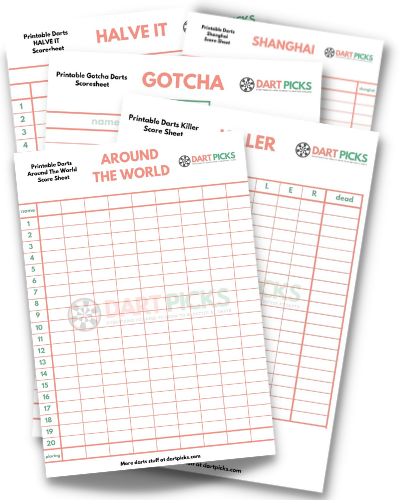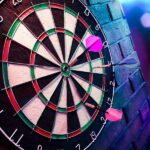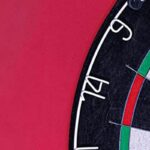Dartboards come in many different shapes and sizes, but there are two main types: bristle dartboards and electronic dartboards. In addition to looking at these in detail, we’ll take you through every other type of dartboard.
Table of Contents
Types of Dartboards
Standard Sisal Bristle Dartboards (Also Known as Steep Tip Darts)
Made from sisal fibers the bristle dartboard is the most common and traditional dartboard and is used in professional darts. The standard dartboard design used by most players is called the Old London style or Clock. It features treble and double rings, with two bullseyes in the center.
Sisal fiber boards are by far the most popular type of dartboard as they are easy to maintain and durable.
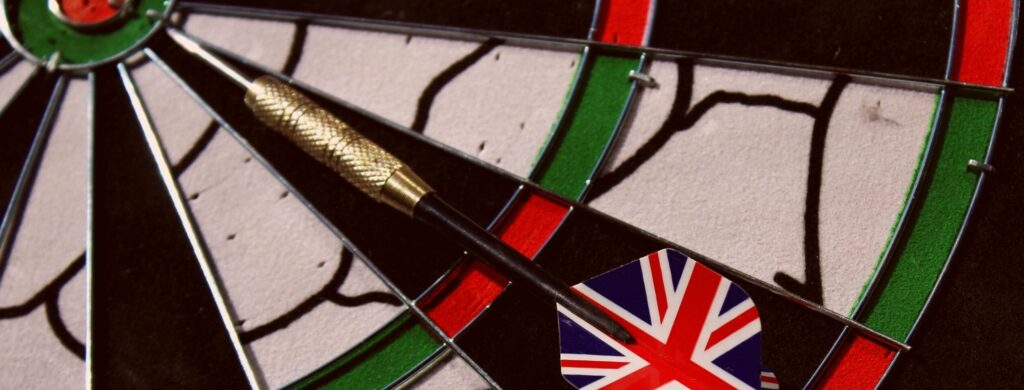
Electronic Dartboards (Also Known As Soft Tip Darts)
Electronic dartboards are perfect for kids and for casual players as the darts don’t have a sharp point and the boards keep score automatically making it much easier to play.
They can be a lot of fun to play and take away one of the biggest pains of playing darts – the scorekeeping.
The other advantage they offer is being able to play against the board. If you anticipate struggling to find people to play with, this could be the perfect solution.
They are terrific for games rooms at home – just make sure you have enough space.
Magnetic Dartboards
These are reserved for kids and casual family gameplay. The main advantage is not having sharp, dangerous darts and instead, the boards use magnets to stick. They are easy to hang and often come double-sided with different target games.
Magnetic boards are the perfect option for playing outdoors as they are low cost and your magnetic darts are unlikely to get damaged landing on the ground.
Regional Variations
There are some notable variations on the traditional London board and these still exist today in the UK where local competitions are held using local boards. Examples of these variations are:
- Ipswich Board (London Five)
- Nodor Lincoln
- Manchester Log-end Dartboard
- Irish Black Dartboard
- The Grimsby
- Yorkshire Board or Kent Doubles
- Tunbridge
- Harrows Quadro 240
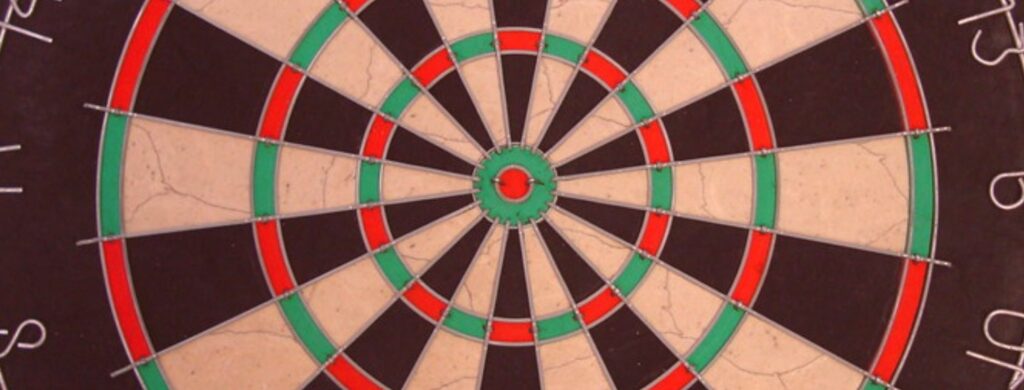
Wooden Dartboards
Dartboards made of wood were the birthplace of darts but the sport soon paid attention to archery and started using fibers instead. Wooden dartboards didn’t last long and had to be soaked overnight to ‘heal’ the wood as of course after playing they’d be left full of holes.
Cork Dartboards
Again a relic from the past, cork boards came after wooden boards. However, cork dartboards are also not hard-wearing and are only used today as a cheap alternative to fiber boards – we do not recommend them.
How to Choose a Dartboard
The choice to be made is really between a standard bristle board and an electronic dartboard.
For sisal fiber (steel tip) boards look for:
- Removeable number ring
- Meets competition standards
- Bladed wiring
- Centreed wall mounting included
- Price that’s affordable
- Warranty
For electronic (soft tip) dartboards look for:
What Type of Dartboard do Professionals Use?
Pro darts players use standard sisal bristle dartboards and play with steel-tipped darts. However, there are many friendly, local leagues that use electronic dartboards in the US and these can be a lot of fun.
If you are interested in checking out electronic dartboards in detail check out our article.
Standard Boards vs Electronic Boards Target Area
It’s important to note that there are differences between the types of board (steel tip vs soft tip) in terms of board target area. In general, on electronic boards, the areas are larger, technically making it easier to score.
There is also the advantage of scoring counting regardless of whether your dart stays in the board with soft tip darts.
Final Thoughts
Darts is one of the best games to play with friends and family and the evolution of different board types means there are lots to choose from. We hope this ultimate guide has given you some insight into what’s available so you can make the right choice and enjoy your dartboard for years to come.
If you like some help setting up your dartboard check out – how to set up a dartboard.
Sue has been playing darts since her 20’s when she played in weekly tournaments and she enjoys writing about darts. She’s also a great teacher, and she enjoys helping others learn how to play the game well. When Sue isn’t throwing darts, she enjoys spending time with her family and friends.
The easy way to keep track of your score is with our printable darts scoresheets. Easy to download and keep on your phone or computer or print straight off from our website. Pop your email address into the box and we'll send them straight to you.




